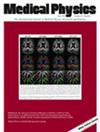Tissue classification from raw diffusion-weighted images using machine learning
Abstract
Background
In diffusion-weighted imaging (DWI), a large collection of diffusion models is available to provide insights into tissue characteristics. However, these models are limited by predefined assumptions and computational challenges, potentially hindering the full extraction of information from the diffusion MR signal.
Purpose
This study aimed at developing a MOdel-free Diffusion-wEighted MRI (MODEM) method for tissue differentiation by using a machine learning (ML) algorithm based on raw diffusion images without relying on any specific diffusion model. MODEM has been applied to both simulation data and cervical cancer diffusion images and compared with several diffusion models.
Methods
With Institutional Review Board approval, 54 cervical cancer patients (median age, 52 years; age range, 29–73 years) participated in the study, including 26 in the early FIGO (International Federation of Gynecology and Obstetrics) stage (IB, 16; IIA, 10) and 28 the late stage (IIB, 8; IIIB, 14; IIIC, 1; IVA, 3; IVB, 2). The participants underwent DWI with 17 b-values (0 to 4500 s/mm2) at 3 Tesla. Synthetic diffusion MRI signals were also generated using Monte-Carlo simulation with Gaussian noise doping under varying substrates. MODEM with multilayer perceptron and five diffusion models (mono-exponential, intra-voxel incoherent-motion, diffusion kurtosis imaging, fractional order calculus, and continuous-time-random-walk models) were employed to distinguish different substrates in the simulation data and differentiate different pathological states (i.e., normal vs. cancerous tissue; and early-stage vs. late-stage cancers) in the cervical cancer dataset. Accuracy and area under the receiver operating characteristic (ROC) curve were evaluated. Mann–Whitney U-test was used to compare the area under the curve (AUC) and accuracy values between MODEM and the five diffusion models.
Results
For the simulation dataset, MODEM produced a higher AUC and better accuracy, particularly in scenarios where the noise level exceeded 5%. For the cervical cancer dataset, MODEM yielded the highest AUC and accuracy in cervical cancer detection (AUC, 0.976; accuracy, 91.9%) and cervical cancer staging (AUC, 0.773; accuracy, 69.2%), significantly outperforming any of the diffusion models (p < 0.05).
Conclusions
MODEM is useful for cervical cancer detection and staging and offers considerable advantages over analytical diffusion models for tissue characterization.


 求助内容:
求助内容: 应助结果提醒方式:
应助结果提醒方式:


